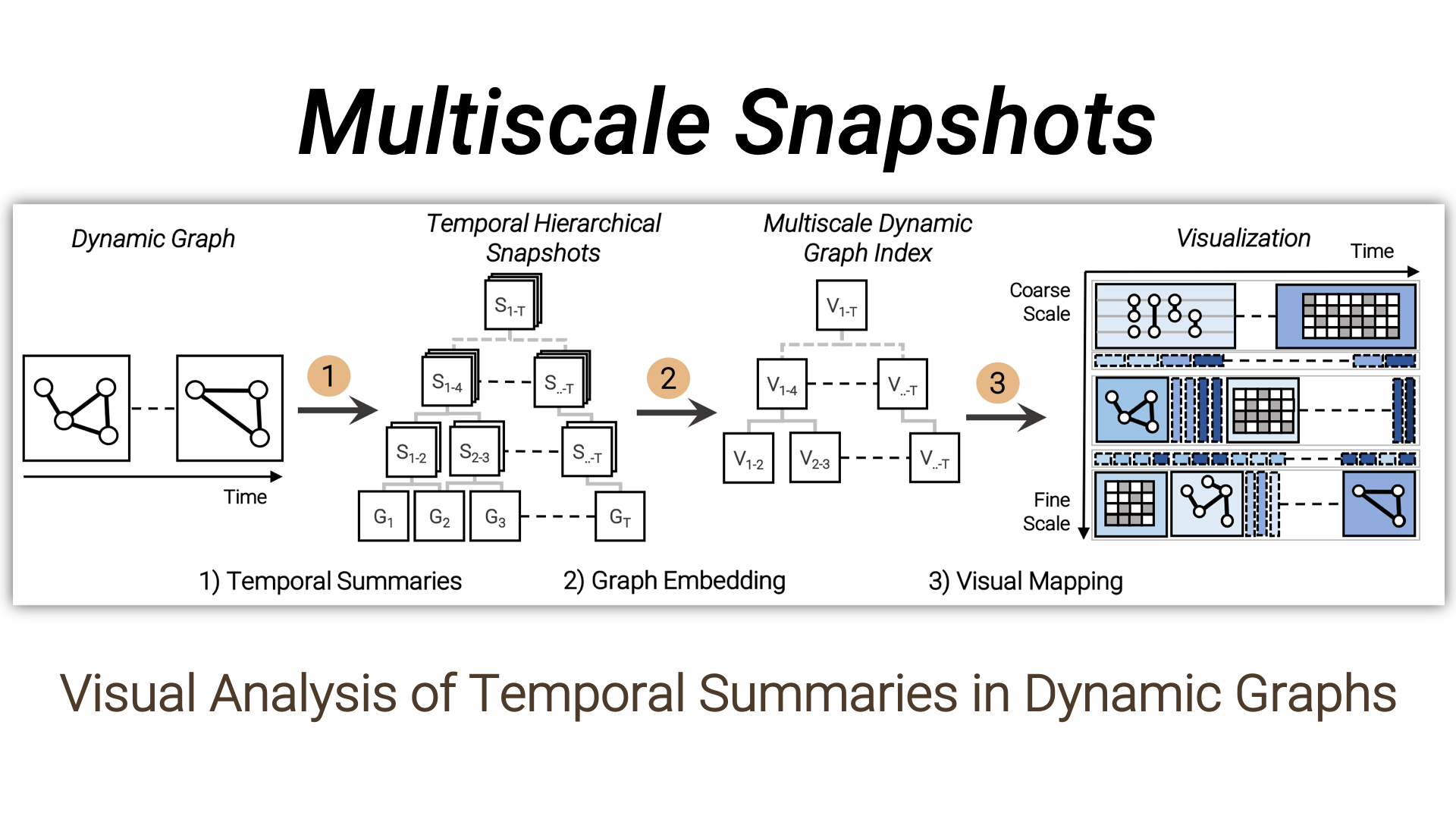Multiscale Snapshots: Visual Analysis of Temporal Summaries in Dynamic Graphs
Eren Cakmak, Udo Schlegel, Dominik Jäckle, Daniel Keim, Tobias Schreck
External link (DOI)
View presentation:2020-10-28T18:15:00ZGMT-0600Change your timezone on the schedule page
2020-10-28T18:15:00Z

Fast forward
Direct link to video on YouTube: https://youtu.be/qqNPRLmFqDM
Keywords
Dynamic Graph, Dynamic Network, Unsupervised Graph Learning, Graph Embedding, Multiscale Visualization.
Abstract
The overview-driven visual analysis of large-scale dynamic graphs poses a major challenge. We propose Multiscale Snapshots, a visual analytics approach to analyze temporal summaries of dynamic graphs at multiple temporal scales. First, we recursively generate temporal summaries to abstract overlapping sequences of graphs into compact snapshots. Second, we apply graph embeddings to the snapshots to learn low-dimensional representations of each sequence of graphs to speed up specific analytical tasks (e.g., similarity search). Third, we visualize the evolving data from a coarse to fine-granular snapshots to semi-automatically analyze temporal states, trends, and outliers. The approach enables us to discover similar temporal summaries (e.g., reoccurring states), reduces the temporal data to speed up automatic analysis, and to explore both structural and temporal properties of a dynamic graph. We demonstrate the usefulness of our approach by a quantitative evaluation and the application to a real-world dataset.